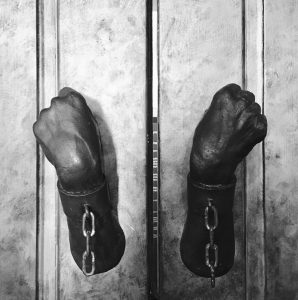Written by Caitlin Anne Young
Edited by Patrick Ang and Aaron Medina
Photos by Jerry Feng
Chinese-Filipinos are blessed with a culture that’s uniquely their own and very specific to their type of diaspora. Whether it’s wearing red during birthdays and holidays, the need to learn Hokkien, or even the “Great Wall”—these various intricacies make up the culture, though the significance of each may vary to some.
What about religion, though? When the Chinese first came to live in the Philippines, they were viewed by Spanish and Filipinos alike as odd. They were all either Buddhist or Taoist and even eschewed Western coats and ties for silken robes. It wasn’t until the 1800s when Spain, determined to improve the Philippine economy during the Industrial Revolution, encouraged the Chinese to migrate to the country. The Chinese converted to Catholicism to keep in their biggest clients’ good graces in return.
Regardless of the reasoning behind the shift in religion, the majority of Chinese-Filipinos today, who are mostly 4th- or 5th-generation immigrants, are Catholic. Despite this, one will be hard-pressed to find a traditional Chinese home that doesn’t have a Buddhist altar complete with burning incense sticks.

This shift in paradigm is very unique indeed. It sees all the devotion that any other Catholic has (the first commandment is I am the Lord, your God, you shall not have any other gods before Me). While most Chinese believe that they follow suit, still they light incense sticks when making an offering at the temple.
How does this all play out?
Perhaps, it’s a move toward a less one-size-fits-all mentality, as has been advocated by Pope Francis. Certain elements of non-Catholic religions and cultures do not contradict (and may even enrich) the way Catholics practice the Faith. Like how science and religion should complement each other, so should culture and religion.
“But,” one might say, “it’s one thing to be aware of scientific facts and having religion strengthen one’s knowledge and understanding of it. It’s another to practice two different religions at the same time!
For that, though it may be a paltry argument, one must recall why the Church calls us to attend Mass. The Mass is considered the highest form of prayer. Others don’t attend it as much, reasoning that they’re too busy with work, studies, et cetera.

The point is, attending Mass is an essential for every Catholic person. Not attending, however, doesn’t immediately correlate to someone being bad—perhaps certain grave reasons (such as a bad illness) don’t allow them the privilege of going as often as others. Likewise, attending Mass doesn’t make one a good person—let alone a good Catholic—either. What good is attending Mass when one does not take its teachings to heart? The Mass is nice, it’s beneficial, and it’s an intrinsic good.
Similarly, Buddhism and ancestral Chinese cultural practices, insofar as they don’t go against Catholic teaching, may even enrich the spiritual lives of Chinese-Filipino Catholics. Both complement each other on matters of being good, loyal, loving, and kind. In the end, the complexities of culture should never cloud the spirituality of religion. Likewise, the intricacies of religion should never interfere with cultural beliefs—provided, of course, that the teachings of both sides are inherently good. One should have good judgment to make that call since, after all, there is no one-size-fits-all in culture or religion.
Citations:
The Chinese in the Philippine Revolution (Philip Ginsberg)
Pope: Jesus guided by truth, mercy, not ‘one size fits all’ mentality (Junno Arocho Esteves)
The Complementarity of Science and Religion (Berkley Center for Religion, Peace & World Affairs)




